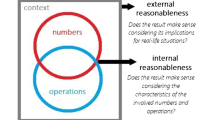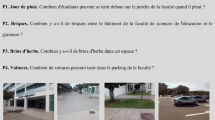Abstract
This study investigates, within the theory of relevance of Sperber & Wilson (1995), how 3-, 4-, and 5-year-old children (n = 45) use context when answering questions. The children were required to answer questions that placed differing contextual and processing demands on them, as predicted by the theory. The results indicate that an increasing ability to use complex contextual information was related to age and was reflected in the children's ability to answer questions appropriately. A developmental pattern became evident in terms of how the children assigned referents, enriched semantic underdetermination, and recovered implicatures. It also became evident that even at the age of 5 years 6 months the children were in the process of becoming more skilled at integrating contextually complex inferences. It was further shown how children's selection of the appropriate context, given the focus of the question, depended on how relevance was achieved in that context.
Similar content being viewed by others
REFERENCES
Bishop, D. V. M. (1997). Uncommon understanding: Development and disorders of language comprehension. Sussex: Psychology Press.
Bishop, D. V. M., & Adams, C. (1992). Comprehension problems in children with specific language impairment: Literal and inferential meaning. Journal of Speech and Hearing Research 35, 119-129.
Blakemore, D. (1990). Constraints on interpretations. In Proceedings of the 16th Annual Meeting of the Berkeley Linguistic Society. Parassession on the Legacy of Grice, 363-370.
Carston, R. (1998.) The semantics/pragmatics distinction: A view from Relevance Theory. UCL Working Papers in Linguistics, 10, 1-30.
Clark, E. V. (1973). Non-linguistic strategies and the acquisition of word meaning. Cognition, 2, 161-182.
Ervin-Tripp, S. (1971). An overview of theories of grammatical development. In D. Slobin (Ed.), The ontogensis of grammar (pp.189-212). New York: Academic Press.
Leinonen, E., & Kerbel, D. (1999). Relevance theory and pragmatic impairment. International Journal of Language and Communication Disorders, 34(4), 367-390.
Leinonen, E., & Letts, C. (1997). Why pragmatic impairment? A case study in the comprehension of inferential meaning. European Journal of Disorders of Communication, 32, 35-51.
Milosky, L. M. (1992). Children listening: The role of world knowledge in comprehension. In R. Chapman (Ed.), Processes in language acquisition and disorders. St Louis: Mosby.
Nicholle, S. (1997). Criteria for the identification of linguistically encoded procedural information. In G. Marjolein (Ed.), Proceedings of the University of Hertfordshire Relevance Theory Workshop. Chelmsford: Peter Thomas and Associates.
Oakhill, J. V., & Yuill, N. M. (1986). Pronoun resolution in skilled and less-skilled comprehenders: Effects of memory load and inferential complexity. Language and Speech, 29, (1), 25-37.
Parnell, M. M., & Amerman, J. D. (1983). Answers to WH-questions: Research and applications. In T. M. Gallagher, & C. A. Prutting, Pragmatic assessment and intervention issues in language (pp. 129-150). San Diego: San Diego College Hill.
Sperber, D. & Wilson, D. (1995). Relevance communication and cognition (2nd ed.). Oxford: Blackwell.
Stothard, S. E., & Hulme, C. (1992). Reading comprehension difficulties in children: The role of language comprehension and working memory skills in reading and writing. An Interdisciplinary Journal, 4, 245-256.
Strohner, H., & Nelson, K. E. (1974). The young child's development of sentence comprehension: Influence of event probability, nonverbal context, syntactic form and strategies. Child Development, 45, 567-576.
Tyack, D. & Ingram, D. (1977). Children's production and comprehension of questions. Journal of Child Language, 4, 211-224.
Umstead, R. S., & Leonard, L. B. (1983). Children's resolution of pronominal reference in text. First Language, 4 (2),11, 73-84.
Yuill, N. M., & Oakhill, J. V. (1991). Children's problems in text comprehension: An experimental investigation. Cambridge: Cambridge University Press.
Sperber, D. & Wilson, D. (1995). Relevance communication and cognition (2nd ed.). Oxford: Blackwell.
Waddell, M. & Granström, B. (1997). Ben's bring-your-bear party. Swindon: Walker Books.
Author information
Authors and Affiliations
Rights and permissions
About this article
Cite this article
Ryder, N., Leinonen, E. Use of Context in Question Answering by 3-, 4- and 5-Year-Old Children. J Psycholinguist Res 32, 397–415 (2003). https://doi.org/10.1023/A:1024847529077
Issue Date:
DOI: https://doi.org/10.1023/A:1024847529077




